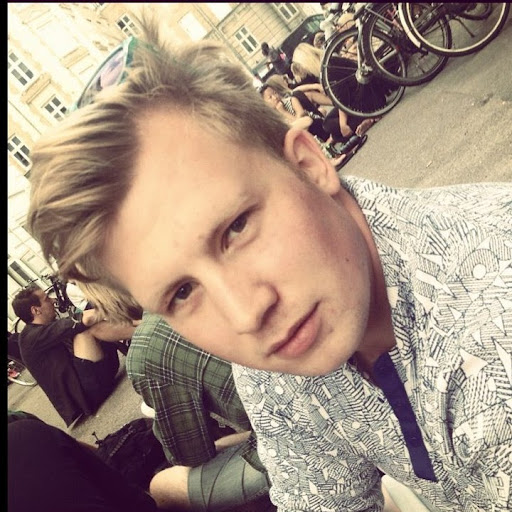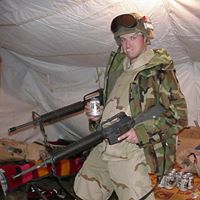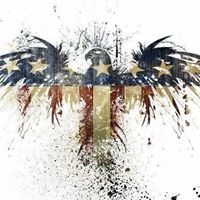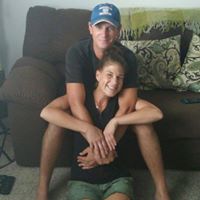Jason H Christiansen
age ~56
from Carlsbad, CA
- Also known as:
-
- Jason Dr Christiansen
- Jason A Christiansen
- Jason Dr Christcansen
- Patricia K Christiansen
- Jason H Christcansen
- Jason Christenso
- Jason Christensen
- Jason Christenson
Jason Christiansen Phones & Addresses
- Carlsbad, CA
- Dublin, CA
- 164 Weir St, Glastonbury, CT 06033
- 497 Route 80, Killingworth, CT 06419 • 8606631186
- 1201 Highland Cir, Blacksburg, VA 24060 • 5409519465
- Guilford, CT
- Vacaville, CA
- Westbrook, CT
Resumes

President At Christiansen Capital
view sourceLocation:
Greater San Diego Area
Industry:
Financial Services

Chief Technology Officer
view sourceLocation:
P/O Box 188, Worcester, MA
Industry:
Biotechnology
Work:
Boundless Bio
Chief Technology Officer
Roche Sequencing Solutions Nov 2018 - Jul 2019
Head of Assay Development
Ignyta, Inc. Jan 2014 - May 2018
Vice President, Diagnostics
Genoptix, A Novartis Company May 2011 - Jan 2014
Senior Director, Assay Development
Historx, Inc. Jan 1, 2006 - Jun 1, 2011
Senior Director of Operations
Chief Technology Officer
Roche Sequencing Solutions Nov 2018 - Jul 2019
Head of Assay Development
Ignyta, Inc. Jan 2014 - May 2018
Vice President, Diagnostics
Genoptix, A Novartis Company May 2011 - Jan 2014
Senior Director, Assay Development
Historx, Inc. Jan 1, 2006 - Jun 1, 2011
Senior Director of Operations
Education:
University of California, Davis 1991 - 1995
Doctorates, Doctor of Philosophy, Biophysics
Doctorates, Doctor of Philosophy, Biophysics
Skills:
Biotechnology
Cancer
Oncology
Molecular Biology
Lifesciences
Biomarkers
Life Sciences
Immunoassays
Immunohistochemistry
Biochemistry
Medical Devices
Clinical Development
Commercialization
Fluorescence
Clinical Trials
Clinical Research
Hardware Diagnostics
Medical Diagnostics
Genomics
Immunology
Diagnostics
Product Development
Cell Biology
Fda
Elisa
R&D
Drug Discovery
Cell Culture
Technology Transfer
Research
Operations Management
Pcr
Biopharmaceuticals
Sequencing
Quality System
Clinical
Quality Systems
Cancer
Oncology
Molecular Biology
Lifesciences
Biomarkers
Life Sciences
Immunoassays
Immunohistochemistry
Biochemistry
Medical Devices
Clinical Development
Commercialization
Fluorescence
Clinical Trials
Clinical Research
Hardware Diagnostics
Medical Diagnostics
Genomics
Immunology
Diagnostics
Product Development
Cell Biology
Fda
Elisa
R&D
Drug Discovery
Cell Culture
Technology Transfer
Research
Operations Management
Pcr
Biopharmaceuticals
Sequencing
Quality System
Clinical
Quality Systems
Interests:
Football
Casinos
Exercise
Sweepstakes
Home Improvement
Reading
Sports
Fishing
Home Decoration
Watching Sports
Cooking
Skiing
Cruises
Outdoors
Electronics
Baseball
Crafts
Fitness
Music
Camping
Family Values
Movies
Christianity
Kids
Diet
Automobiles
Cats
Travel
Motorcycling
Career
Watching Baseball
Investing
Traveling
Watching Football
Casinos
Exercise
Sweepstakes
Home Improvement
Reading
Sports
Fishing
Home Decoration
Watching Sports
Cooking
Skiing
Cruises
Outdoors
Electronics
Baseball
Crafts
Fitness
Music
Camping
Family Values
Movies
Christianity
Kids
Diet
Automobiles
Cats
Travel
Motorcycling
Career
Watching Baseball
Investing
Traveling
Watching Football

Jason Christiansen
view source
Jason Christiansen
view source
Jason Christiansen
view source
Jason Christiansen
view sourceReal Estate Brokers

Jason Christiansen, San Marcos CA President / Realtor
view sourceSpecialties:
Buyer's Agent
Listing Agent
Commercial R.E.
Refinancing
Listing Agent
Commercial R.E.
Refinancing
Work:
www.MoneyBackRealty.org
950 Boardwalk # 105, San Marcos, CA 92078
7606379874 (Office), 8669666603 (Fax)
950 Boardwalk # 105, San Marcos, CA 92078
7606379874 (Office), 8669666603 (Fax)
Links:
Site

Jason Christiansen, Greenwoodvillage CO CEO
view sourceWork:
IMC
6535 S Dayton St
3033333333 (Office)
6535 S Dayton St
3033333333 (Office)
Us Patents
-
Automatic Exposure Time Selection For Imaging Tissue
view source -
US Patent:7978258, Jul 12, 2011
-
Filed:Aug 29, 2008
-
Appl. No.:12/201753
-
Inventors:Jason Christiansen - Glastonbury CT, US
Dylan M. Reilly - Middletown CT, US
Mark Gustavson - Niantic CT, US -
Assignee:HistoRx, Inc. - New Haven CT
-
International Classification:H04N 5/238
-
US Classification:348364
-
Abstract:The invention relates to a system for automatically adjusting an exposure time to improve or otherwise optimize a dynamic range of a digital image. The system includes a camera configured to capture an image of a subject within the field of view at a first exposure time. The captured image is composed of multiple pixels, with each pixel having a respective intensity value. The system further includes a shutter or suitable control configured to control an exposure time of the camera. A controller configured to carryout the following steps including: (a) querying a frequency distribution of pixel intensity values; (b) determining an effective “center of mass” of such a distribution, or histogram, to determine an adjusted exposure time; and (c) capturing a second image of the subject at the adjusted exposure time thereby obtaining an image with an improved or optimal dynamic range.
-
Method And System For Standardizing Microscope Instruments
view source -
US Patent:8027030, Sep 27, 2011
-
Filed:Jan 24, 2011
-
Appl. No.:13/012707
-
Inventors:Jason Christiansen - Glastonbury CT, US
Robert Pinard - Andover MA, US
Maciej P. Zerkowski - Old Lyme CT, US
Gregory R. Tedeschi - Cromwell CT, US -
Assignee:HistoRx, Inc. - New Haven CT
-
International Classification:G01J 1/40
G02B 27/14 -
US Classification:3562438, 359634
-
Abstract:Methods and apparatus for standardizing quantitative measurements from a microscope system. The process includes a calibration procedure whereby an image of a calibration slide is obtained through the optics of the microscope system. The calibration slide produces a standard response, which can be used to determine a machine intrinsic factor for the particular system. The machine intrinsic factor can be stored for later reference. In use, images are acquired of a target sample and of the excitation light source. The excitation light source sample is obtained using a calibration instrument configured to sample intensity. The calibration instrument has an associated correction factor to compensate its performance to a universally standardized calibration instrument. The machine intrinsic factor, sampled intensity, and calibration instrument correction factor are usable to compensate a quantitative measurement of the target sample in order to normalize the results for comparison with other microscope systems.
-
Method And System For Standardizing Microscope Instruments
view source -
US Patent:8120768, Feb 21, 2012
-
Filed:Jan 20, 2011
-
Appl. No.:13/010643
-
Inventors:Jason Christiansen - Glastonbury CT, US
Robert Pinard - Andover MA, US
Maciej P. Zerkowski - Old Lyme CT, US
Gregory R. Tedeschi - Cromwell CT, US -
Assignee:HistoRx, Inc. - Branford CT
-
International Classification:G01J 1/00
-
US Classification:3562438, 3562431
-
Abstract:Methods and apparatus for standardizing quantitative measurements from a microscope system. The process includes a calibration procedure whereby an image of a calibration slide is obtained through the optics of the microscope system. The calibration slide produces a standard response, which can be used to determine a machine intrinsic factor for the particular system. The machine intrinsic factor can be stored for later reference. In use, images are acquired of a target sample and of the excitation light source. The excitation light source sample is obtained using a calibration instrument configured to sample intensity. The calibration instrument has an associated correction factor to compensate its performance to a universally standardized calibration instrument. The machine intrinsic factor, sampled intensity, and calibration instrument correction factor are usable to compensate a quantitative measurement of the target sample in order to normalize the results for comparison with other microscope systems.
-
Method And System For Standardizing Microscope Instruments
view source -
US Patent:8314931, Nov 20, 2012
-
Filed:Aug 12, 2011
-
Appl. No.:13/209068
-
Inventors:Jason Christiansen - Glastonbury CT, US
Robert Pinard - Andover MA, US
Maciej P. Zerkowski - Old Lyme CT, US
Gregory R. Tedeschi - Cromwell CT, US -
Assignee:HistoRx, Inc. - New Haven CT
-
International Classification:G01J 1/40
G02B 27/14 -
US Classification:3562431, 356634
-
Abstract:Methods and apparatus for standardizing quantitative measurements from a microscope system. The process includes a calibration procedure whereby an image of a calibration slide is obtained through the optics of the microscope system. The calibration slide produces a standard response, which can be used to determine a machine intrinsic factor for the particular system. The machine intrinsic factor can be stored for later reference. In use, images are acquired of a target sample and of the excitation light source. The excitation light source sample is obtained using a calibration instrument configured to sample intensity. The calibration instrument has an associated correction factor to compensate its performance to a universally standardized calibration instrument. The machine intrinsic factor, sampled intensity, and calibration instrument correction factor are usable to compensate a quantitative measurement of the target sample in order to normalize the results for comparison with other microscope systems.
-
Compartment Segregation By Pixel Characterization Using Image Data Clustering
view source -
US Patent:8335360, Dec 18, 2012
-
Filed:May 14, 2008
-
Appl. No.:12/153171
-
Inventors:Jason H. Christiansen - Glastonbury CT, US
Robert Pinard - New Haven CT, US
Mark Gustavson - Niantic CT, US
Brian Bourke - Hamden CT, US
Dylan M. Reilly - Middletown CT, US
Gregory R. Tedeschi - Cromwell CT, US -
Assignee:Historx, Inc. - New Haven CT
-
International Classification:G06K 9/00
-
US Classification:382128, 382133
-
Abstract:The present invention relates generally to improved methods of defining areas or compartments within which biomarker expression is detected and quantified. In particular, the present invention relates to automated methods for delineating marker-defined compartments objectively with minimal operator intervention or decision making. The method provides for precise definition of tissue, cellular or subcellular compartments particularly in histological tissue sections in which to quantitatively analyzing protein expression.
-
Method And System For Standardizing Microscope Instruments
view source -
US Patent:8427635, Apr 23, 2013
-
Filed:Jan 27, 2012
-
Appl. No.:13/360532
-
Inventors:Jason Christiansen - Glastonbury CT, US
Robert Pinard - New Haven CT, US
Maciej P. Zerkowski - Old Lyme CT, US
Gregory R. Tedeschi - Cromwell CT, US -
Assignee:HistoRx, Inc. - New Haven CT
-
International Classification:G01J 1/00
-
US Classification:3562431, 3562438
-
Abstract:Methods and apparatus for standardizing quantitative measurements from a microscope system. The process includes a calibration procedure whereby an image of a calibration slide is obtained through the optics of the microscope system. The calibration slide produces a standard response, which can be used to determine a machine intrinsic factor for the particular system. The machine intrinsic factor can be stored for later reference. In use, images are acquired of a target sample and of the excitation light source. The excitation light source sample is obtained using a calibration instrument configured to sample intensity. The calibration instrument has an associated correction factor to compensate its performance to a universally standardized calibration instrument. The machine intrinsic factor, sampled intensity, and calibration instrument correction factor are usable to compensate a quantitative measurement of the target sample in order to normalize the results for comparison with other microscope systems.
-
Method And System For Standardizing Microscope Instruments
view source -
US Patent:20080309929, Dec 18, 2008
-
Filed:Jun 13, 2008
-
Appl. No.:12/139370
-
Inventors:Jason Christiansen - Glastonbury CT, US
Robert Pinard - Andover MA, US
Maciej P. Zerkowski - Old Lyme CT, US
Gregory R. Tedeschi - Cromwell CT, US -
International Classification:G01J 1/10
-
US Classification:3562431
-
Abstract:Methods and apparatus for standardizing quantitative measurements from a microscope system. The process includes a calibration procedure whereby an image of a calibration slide is obtained through the optics of the microscope system. The calibration slide produces a standard response, which can be used to determine a machine intrinsic factor for the particular system. The machine intrinsic factor can be stored for later reference. In use, images are acquired of a target sample and of the excitation light source. The excitation light source sample is obtained using a calibration instrument configured to sample intensity. The calibration instrument has an associated correction factor to compensate its performance to a universally standardized calibration instrument. The machine intrinsic factor, sampled intensity, and calibration instrument correction factor are usable to compensate a quantitative measurement of the target sample in order to normalize the results for comparison with other microscope systems.
-
Src Activation For Determining Cancer Prognosis And As A Target For Cancer Therapy
view source -
US Patent:20100081666, Apr 1, 2010
-
Filed:Jul 14, 2009
-
Appl. No.:12/503019
-
Inventors:Christina M. COUGHLIN - Berwyn PA, US
Michael E. BURCZYNSKI - Cedar Knolls NJ, US
Marisa P. DOLLED-FILHART - New Haven CT, US
Robert PINARD - Andover MA, US
Donald WALDROM - Fairfield CT, US
Charles ZACHARCHUK - Westford MA, US
Frederick IMMERMANN - Suffern NY, US
Maha KARNOUB - Doylestown PA, US
Jason CHRISTIANSEN - Glastonbury CT, US
Mark GUSTAVSON - Niantic CT, US
Annette MOLINARO - New Haven CT, US
Alpana Waldron - Fairfield CT, US -
Assignee:Wyeth - Madison NJ
-
International Classification:A61K 31/506
C12Q 1/68
C12Q 1/48
C12Q 1/02 -
US Classification:51425219, 435 6, 435 15, 435 29, 51425306, 514275
-
Abstract:Methods of cancer diagnosis and prognosis using biomarkers.
Name / Title
Company / Classification
Phones & Addresses
Socal Erealty
1901 1 Ave STE 217L, San Diego, CA 92101
8003779931
8003779931
President
CHRISTIANSEN CAPITAL
Financial Advisor · Mortgage Broker · Property Management · Real Estate Agents
Financial Advisor · Mortgage Broker · Property Management · Real Estate Agents
705 PIER VIEW WAY STE D, Oceanside, CA 92054
705 Pier Vw Way, Oceanside, CA 92054
8007608680
705 Pier Vw Way, Oceanside, CA 92054
8007608680
President
HEDGE FUNDING GROUP INTL. INC
705 PIER VIEW WAY STE D, Oceanside, CA 92054
PO Box 361, San Luis Rey, CA 92068
PO Box 361, San Luis Rey, CA 92068
Wikipedia References

Jason Christiansen
Plaxo

Jason Christiansen
view sourceBrooklyn, NY

Jason Christiansen
view sourceCEO at Internet Media
Classmates

Jason Christiansen
view sourceSchools:
Bluebonnet Elementary School Round Rock TX 1995-2003
Community:
Robert Peaslee, Vanessa Thiele, Scott Vansickel

Jason Christiansen
view sourceSchools:
Elkhorn High School Elkhorn NE 1983-1987
Community:
Mitch Rolfes, Brett Salemink, Chris Johnson, Anne Howard, Christian Eversole, Jessica Twohig, Margaret Rasmussen, Lisa Newell, Jeff Lincoln, Keith Moss

Vermillion Community Coll...
view sourceGraduates:
Jason Christiansen (2004-2008),
Devin Caliri (1992-1994),
Maggie Christensen (1995-1998)
Devin Caliri (1992-1994),
Maggie Christensen (1995-1998)

Gettysburg High School, G...
view sourceGraduates:
Jason Christiansen (1984-1988),
jill Althoff (2003-2007),
victoria shelleman (1962-1966),
Melissa Boone (1995-1999)
jill Althoff (2003-2007),
victoria shelleman (1962-1966),
Melissa Boone (1995-1999)

Philadelphia University, ...
view sourceGraduates:
Karen Bukics (2001-2006),
Jason Christiansen (1996-2001),
Wayne Broadfield (1995-2000),
Richard Andrews (1999-2004),
Carl Haeussler (1972-1972)
Jason Christiansen (1996-2001),
Wayne Broadfield (1995-2000),
Richard Andrews (1999-2004),
Carl Haeussler (1972-1972)

Berean Christian High Sch...
view sourceGraduates:
Jason Christiansen (1997-2001),
John Stoker (1995-1999),
Cj Richardson (1994-1998)
John Stoker (1995-1999),
Cj Richardson (1994-1998)
Youtube
Myspace
Googleplus

Jason Christiansen
Work:
Nike Denmark - Customer Operations (2008)
Sportmaster Rødovre - Sels rep (2003-2005)
Sportmaster Rødovre - Sels rep (2003-2005)
Education:
Lyngby Handelsskole

Jason Christiansen

Jason Christiansen

Jason Christiansen

Jason Christiansen

Jason Christiansen

Jason Christiansen

Jason Christiansen
Work:
Nike Denmark - Customer Operation (2008)

Jason Christiansen
view source
Jason Christiansen
view source
Jason Christiansen
view source
Jason Christiansen
view source
Jason Christiansen
view source
Jason Christiansen
view source
Jason Christiansen
view source
Jason Christiansen
view sourceFlickr
Get Report for Jason H Christiansen from Carlsbad, CA, age ~56




















